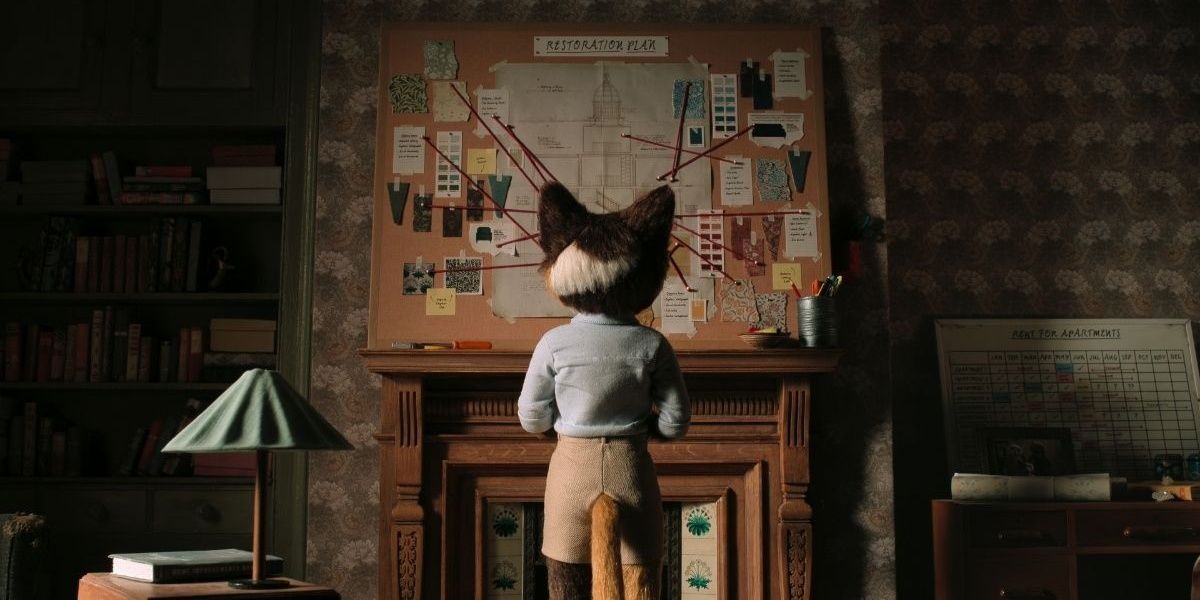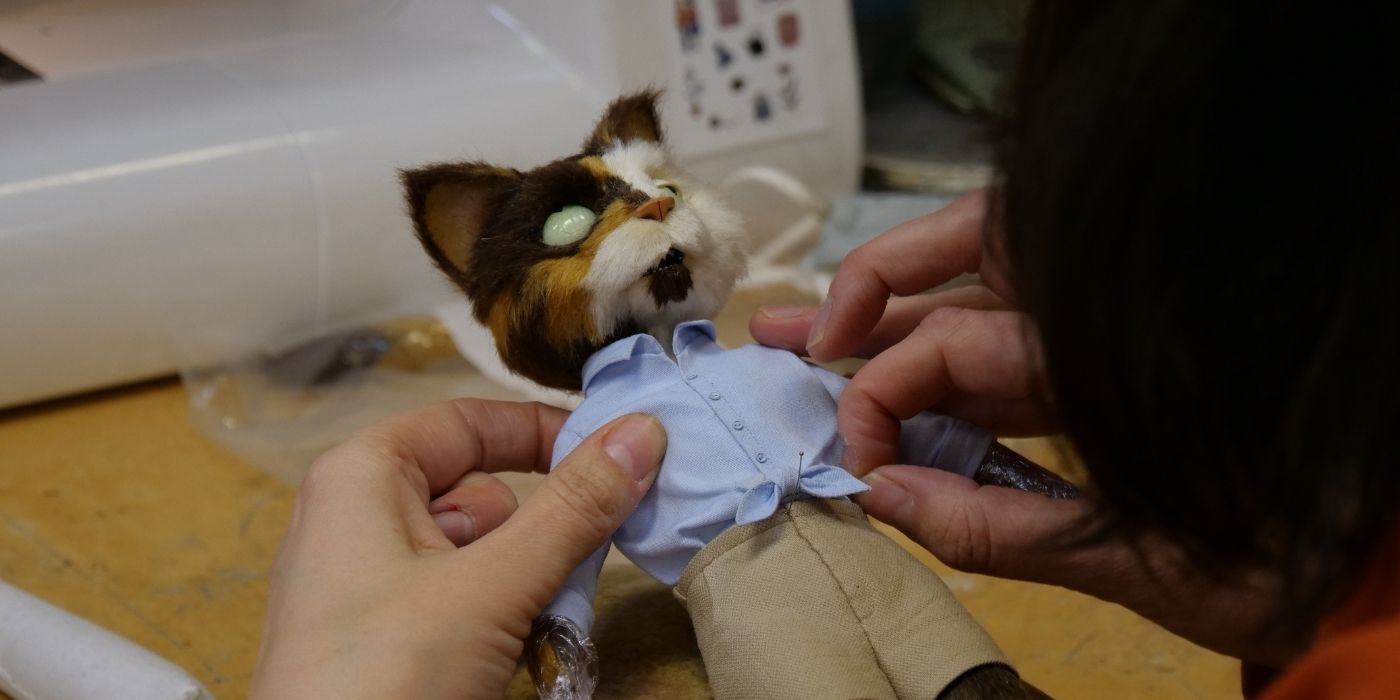Kicking off this New Year on a good note, Netflix's The House brilliantly shines a spotlight on four independent directors and stop motion creatives, Emma de Swaef and Marc Roels, Niki Lindroth von Bahr, and Paloma Baeza. Produced by the award-winning production company Nexus Studios, the anthology consists of three short stories mashed into a single movie, each adding its own element of eeriness and surprise.
The third — and last story— is Paloma Baeza's refreshing addition that tells a melancholic tale of companionship and soul-searching during times of destruction. Baeza introduces the feline character, Rosa. The protagonist is a young landlady who's renovating her house amid her town's evacuation due to major flooding. Fans will be surprised to hear the familiar voice of Helena Bonham Carter in the story as she voices one of Rosa's few tenants. Game Rant had the opportunity to have an exclusive chat with Paloma Baeza about the inspiration behind her story and her characters, and her fascination with cats.
Game Rant: Can you tell me about Rosa and the complex emotions that she has throughout the story?
Paloma Baeza: I'm glad you think she's complex because I like characters who have qualities that are contradictory. I think with all the characters there might be parts of them that you find frustrating, but they're also likable. In her particular case, you have a character who it seems pretty obvious that she really should be making some changes in her life. And she's just unable to do that because she's obsessed and blind to the thing she needs to do.
She's obsessed with the past, and she can't seem to move on. It's a situation and a very human problem that you can apply to both personal relationships and also the state of our planet. We all need to start making hard choices, hard changes about the way our planet and the way our world is going. But it's hard because they're difficult things. It might be easier to not look at them or to turn away from them because it's overwhelming. I wrote her with all these things in mind, representing all these things, but I think they come out quite naturally from a character who finds it difficult to deal with change and to connect with others. That's quite a universal predicament that can be applied to lots of situations.
GR: Yeah, definitely. While we're on the topic of the characters, I'd like to move to the visual aspect of them. What was behind the decision to make them all felines?
Baeza: Well, I mean, I can dress it up in lots of ways, but I just like cats, There are certain animals that I'm more attracted to or that I find fascinating or interesting. I think it's to do with an aesthetic thing, but it's also a behavioral thing. They're quite fascinating in terms of their behavior and the way they move. It gave rise to an animal that can show you something about what they're feeling with their physicality and their body. Their tail and their ears can actually inform quite a lot of their inner feelings and give you a level of expressiveness that could be quite playful and fun.
GR: I love that. Who's your favorite character in the story?
Baeza: It's quite hard to choose. But I have to say that there's something about Elias, who's the little black cat, Rosa's tenant. He's just always quite adorable, and I did base him on a little black cat that I had. So, somehow I've got a soft spot for him. But I think there's just something very sort of warm and sweet and loving about that character. Even though he drives Rosa a bit crazy, he's too laid back for her. But there's something about his energy. I'd like to hang out with him.
Game Rant: Each of the three stories focuses on the theme of this house. How did you start writing your story?
Baeza: I think it's a very powerful theme. It's very interesting how humans place meaning, deep meaning in objects. Recently, there was an object that I thought had been given to me by someone else, and it had no meaning. And then I learned that actually, it had been given to me by my daughter, and I didn't know. So, it was something like that. Suddenly, I felt— how did I not ascribe more meaning to this object? Now it's become a sort of precious thing, and it taps into that same quality.
That a house is not just a house. When you buy it, or you rent it, or whatever, you invest so many emotions into that space. It's where you live, it's where you work. It's where you have relationships... I think it's very powerful, it's not just bricks and mortar. And that's a very human trait. In my story, it speaks to that. It's somebody that can't let go of that association. And that stream of memories that's tied up in the house, in the walls, in the stairs. She can't break away from it because she's stuck in it. It's very much about the need to have meaning and where you place that meaning. Is it actually in objects or is it in people? I think you can then forget that people are actually more important than objects.
The House is currently streaming on Netflix.



